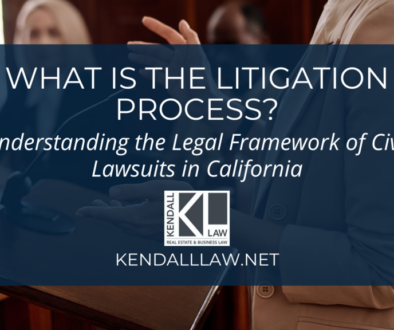Effective Summary Judgment Practice Series – Key to a Winning Separate Statement
Sometimes you have to lose to learn a valuable lesson. Several years ago I had what I thought was a slam dunk of a Motion for Summary Judgment. It was a case brought by a homeowner that was in default on her home loan and was suing the loan servicer and the assigned beneficiary for fraud and other causes of action to invalidate her loan. At deposition I got her to admit that she had not paid the mortgage, she could not provide any evidence that she had the money to bring the loan current, and she even testified that she did not have any evidence that she was defrauded. Finally she testified that she had not damages. Okay, that would be all I needed. I prepared my motion for summary judgment and separate statement and was sure I was going to win. I had all my evidence and deposition testimony attached to declarations and cited to in my separate statement and moving papers.
However, I would learn very soon that how you word the facts in your separate statement can take you from a winning MSJ to being stuck going to trial on a case that has no merit. The judge heard our arguments and stated that he was going to deny the MSJ based solely on the separate statement. I argued for 10 minutes that the deposition testimony was cited in the separate statement, attached to the exhibits and argued in the moving papers. But because I used legalese and did not plainly state “Plaintiff admitted that she had not been defrauded” or something similar, it was not good enough. I was shocked. But I learned a very valuable lesson. The separate statement needs to be simple and concise because it may be the only document the judge bases his decision on.
The California Rule of Court 3.1350 is very specific as to the format of the separate statement. Per 3.1350 the separate statement must separately identify each cause of action, claim and issue or affirmative defense and each supporting materiel fact claimed to be without dispute with response to that cause of action, claim and issue or affirmative defense. It must be in a two column format in numerical order with a citation of evidence in the first column. The opposing party will then use the second column to respond to each fact listed.
Code of Civil Procedure 437c also provides that the separate statement must set forth the facts plainly and concisely and only include those facts that are materiel and undisputed.
I have two main tips:
Keep it simple. Use only the necessary material facts. Do not pepper in facts that are in the body of the motion just because they are needed to tell the story. I have learned this lesson as well. Doing so opens the door for the other side to dispute a fact, which may not even be material and you then have to argue why that disputed fact does not matter. I will discuss how I have handled that in my next blog post.
Include key deposition testimony or discovery responses in the facts portion of the Separate Statement . For instance, in the case I talk about above, I should have said Fact No. 3: “Plaintiff admitted that she had not suffered any damages: Q: Have you suffered any damage? A: No.” Then for the evidence cite to the lines and page numbers of the deposition. This is why early preparation is key (as discussed in my earlier blog). That way you can ask the right questions and get great little nuggets for the Separate Statement.
The moral of this story is,
Author: Eileen Kendall





